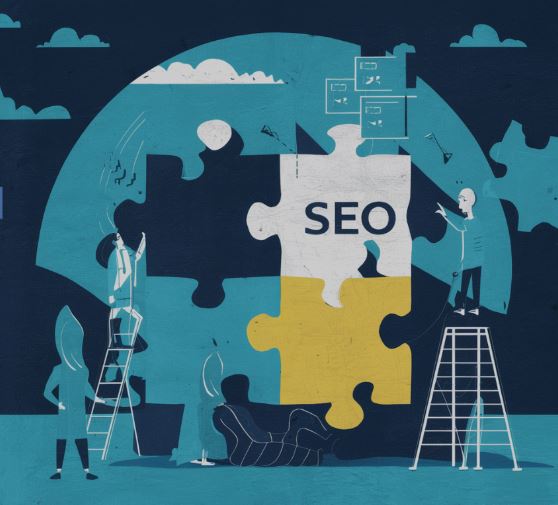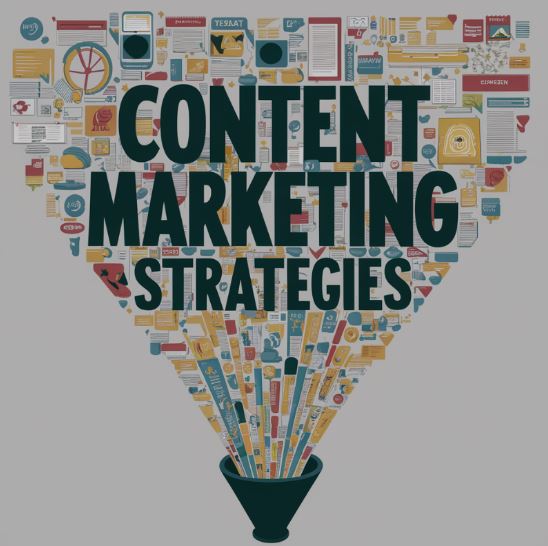You pour hours into ad copy that barely nudges your conversion rates. Most marketers miss simple shifts that make all the difference in landing page optimization. This post breaks down how to write high-converting copy, covering audience understanding, crafting...
The Ultimate Guide to Enterprise SaaS SEO in 2024

Categories
You may also like…
Essential Best Practices for Mobile Website Performance
Most websites lose over half their visitors because pages don't load quickly or navigation feels clunky on phones. If your site isn't built with mobile optimization in mind, you're missing out on traffic and better rankings. This post breaks down simple steps like...
Harness the Power of Social Media Advertising for Black Friday Promotions
Black Friday marketing can make or break your holiday sales. Many small businesses miss key chances because their email campaigns and website aren't ready for the rush. This post breaks down simple marketing tips, like timing urgency-driven offers and boosting social...
The enterprise software landscape is a complex and competitive arena. Success hinges on attracting and converting high-value customers who demand robust solutions, customized integrations, and a demonstrable return on investment. To thrive in this challenging environment, a comprehensive and data-driven SEO strategy is no longer a luxury – it’s a necessity. This guide will delve into the unique challenges and opportunities of Enterprise SaaS SEO, equipping you with the knowledge and strategies to achieve sustainable growth in 2024 and beyond.
Understanding the Unique Challenges of Enterprise SaaS SEO

While the principles of SEO remain constant, the enterprise SaaS market presents a distinct set of challenges that demand tailored approaches.
Complexity and Scale
Enterprise SaaS solutions are often intricate systems designed to address the complex needs of large organizations. This inherent complexity poses a challenge in effectively communicating the value proposition to potential customers. They must grasp the intricacies of features, integrations, and how these translate to tangible business benefits.
Furthermore, enterprise-grade SaaS products are built to scale seamlessly across large organizations. This necessitates robust infrastructure, advanced security measures, and continuous performance optimization to handle the demands of a diverse user base. These technical aspects, while crucial for success, can be challenging to articulate to potential clients who are primarily focused on business outcomes.
Lengthy Sales Cycles
Enterprise SaaS sales cycles are notoriously long, often stretching over months or even years. This extended timeframe necessitates a content strategy that fosters trust, builds relationships, and educates potential customers throughout their buying journey.
Enterprise decision-making processes often involve multiple stakeholders from various departments, each with their own priorities and concerns. This fragmented landscape demands a holistic content approach that addresses diverse needs and perspectives, ultimately securing buy-in from all relevant parties.
Tightly Controlled Budgets
While enterprise organizations have significant budgets, they are often under intense scrutiny to justify every dollar spent. SaaS providers must demonstrate a clear return on investment (ROI) for their solutions. This emphasis on measurable results means that marketing investments, including SEO, must be demonstrably impactful and aligned with business objectives.
The challenge lies in showcasing the long-term value of SEO, which often goes beyond immediate sales figures. Metrics like brand awareness, thought leadership, and customer retention contribute significantly to the long-term success of a SaaS business, yet these are often difficult to quantify directly in terms of revenue.
Competing with Established Players
The enterprise SaaS landscape is dominated by well-established players with deep pockets, strong brand recognition, and extensive customer bases. Breaking through this crowded market requires a laser-focused and strategic SEO approach that leverages innovative content strategies, targeted keyword research, and impactful link building.
Competing effectively demands not only attracting new customers but also establishing a clear differentiator. This might involve highlighting unique features, emphasizing a specific industry focus, or showcasing a commitment to customer service that sets you apart from the competition.
Defining Your Enterprise SaaS SEO Strategy
Building a successful SEO strategy for enterprise SaaS requires a holistic approach that encompasses keyword research, content optimization, reputation management, and data-driven analysis.
Keyword Research and Targeting
Traditional keyword research techniques, which often focus on search volume alone, may not be sufficient for enterprise SaaS. Enterprise buyers are more discerning and conduct more complex searches, often using long-tail keywords, industry-specific terms, and solution-oriented phrases.
To effectively target these users, delve deeper into user intent. Are they researching specific features? Comparing solutions? Seeking industry insights? Understanding user intent allows you to develop a keyword strategy that aligns with their needs and resonates with their search queries.
Content Optimization for Enterprise Buyers
Enterprise buyers are not easily swayed by generic marketing messages. They demand in-depth information, insightful case studies, and thought leadership that addresses their specific challenges and pain points.
Your content needs to be informative, persuasive, and tailored to the needs of this discerning audience. Leverage a variety of content formats, including:
- White papers: Provide in-depth analysis of industry trends and challenges, offering solutions and recommendations supported by research and data.
- Case studies: Showcase real-world examples of how your SaaS solution has successfully addressed the challenges of other enterprise organizations, quantifying the benefits and demonstrating tangible results.
- Webinars and online events: Offer interactive sessions that provide valuable insights and address specific topics relevant to your target audience, allowing for direct engagement and Q&A.
- Industry reports and research: Establish your brand as a thought leader by conducting and publishing original research on industry trends, best practices, and emerging technologies.
- Expert blog posts: Offer valuable insights and practical advice from industry experts, building credibility and showcasing your expertise.
- Interactive tools and calculators: Create tools that provide value to potential customers, such as ROI calculators, cost-benefit analyses, or assessment tools that address specific business needs.
Building Credibility and Authority
Trust is paramount in the enterprise space. Potential customers need to be confident in your expertise and your ability to deliver on your promises.
Building credibility requires a multi-pronged approach:
- High-quality content: Consistently publish valuable and insightful content that demonstrates your knowledge and expertise, fostering trust and building a loyal audience.
- Industry publications: Contribute to reputable industry publications, sharing your insights and establishing yourself as a thought leader in your field.
- Influencer engagement: Connect with influential figures in your industry, partnering on content, participating in webinars, or securing guest posts.
- Community involvement: Actively participate in industry forums, events, and online communities, engaging with other professionals and contributing to the conversation.
- Thought leadership: Develop and share white papers, research studies, and original insights that position your brand as a thought leader in your field.
Measuring and Analyzing Results
While traditional SEO metrics like keyword rankings and organic traffic are important, they are not the sole indicators of success for enterprise SaaS. Track and analyze metrics that directly correlate with your business objectives, including:
- Conversions: Measure the number of website visitors who convert into leads, demos, or sales.
- Leads generated: Track the number of qualified leads generated through your SEO efforts.
- Sales attributed to SEO: Analyze the sales pipeline and attribute revenue to specific keywords, landing pages, and content pieces.
- Customer lifetime value (CLTV): Evaluate the long-term value of customers acquired through SEO, considering factors like repeat purchases, referrals, and overall customer satisfaction.
The Importance of Technical SEO for Enterprise SaaS
Technical SEO ensures that your website is structured and optimized for search engines, providing a seamless user experience and maximizing visibility.
Website Architecture and User Experience
Enterprise SaaS websites often have complex structures with numerous pages and intricate navigation. It’s crucial to ensure that your website architecture is logical, user-friendly, and optimized for search engines.
- Clear sitemap: Provide a clear and concise sitemap that makes it easy for users and search engines to navigate your website.
- Logical URL structure: Create URLs that are easily understandable and reflect the content of the page, using relevant keywords and a hierarchical structure.
- Internal linking strategy: Link relevant pages within your website, creating a logical flow and directing users to valuable content.
- User-friendly navigation: Design a simple and intuitive navigation menu that allows users to easily find the information they are looking for.
Site Speed and Mobile Optimization
Enterprise buyers are time-pressed individuals who expect fast loading times. Slow loading speeds can lead to frustration and lost conversions.
- Optimize images and files: Compress images and other media files to reduce page load time.
- Minimize HTTP requests: Reduce the number of files that need to be loaded to render a page.
- Use caching: Cache static content to reduce server load and improve page speed.
- Mobile-first indexing: Prioritize mobile-first indexing to ensure your website performs well on all devices.
- Responsive design: Ensure your website adapts seamlessly to different screen sizes and devices, providing a consistent experience across all platforms.
Secure HTTPS and SSL Certificates
Security is paramount for enterprise organizations. Using HTTPS and SSL certificates is no longer optional. It ensures that your website is secure and protects sensitive data exchanged during online transactions, building trust with potential customers.
Schema Markup and Structured Data
Schema markup helps search engines understand the content on your website, improving visibility and enhancing your search results. Implementing structured data provides additional context about your products and services, making them more easily discoverable and increasing your chances of appearing in rich snippets and knowledge panels.
Content Marketing Strategies for Enterprise SaaS

Content marketing is a powerful tool for attracting, engaging, and converting enterprise customers.
Creating High-Quality Content That Resonates
Enterprise buyers are looking for value, not fluff. Focus on creating high-quality content that addresses their specific needs and challenges, offering practical advice, valuable insights, and thought-provoking perspectives.
Leveraging Case Studies and Success Stories
Real-world evidence is more persuasive than any marketing message. Showcase how your SaaS solution has helped other enterprise businesses achieve their goals. Share case studies and success stories that highlight the tangible benefits of using your product.
Building a Strong Blog and Content Hub
Establish a dedicated blog and content hub where you can consistently publish valuable content relevant to your target audience. This platform allows you to build a loyal readership, attract potential leads, and establish your brand as a thought leader in the industry.
Engaging with Influencers and Thought Leaders
Reach out to industry influencers and thought leaders to collaborate on content, participate in webinars, and secure guest posts. Building relationships with influential figures can boost your visibility and credibility within the enterprise SaaS market.
Optimizing Your Enterprise SaaS Website for Conversions
Your website should be designed with conversions in mind, guiding visitors toward desired actions.
Effective Call-to-Actions
Use clear and compelling call-to-actions (CTAs) that encourage visitors to take the next step, such as requesting a demo, downloading a whitepaper, or signing up for a trial.
Landing Page Optimization
Create dedicated landing pages for specific campaigns and promotions, optimizing them for relevant keywords and providing a seamless user experience. Focus on clear messaging, relevant content, and persuasive CTAs.
A/B Testing and Experimentation
Don’t be afraid to experiment. Run A/B tests to optimize website elements, such as headlines, images, CTAs, and website layout, to identify what resonates most with your target audience.
Integration with CRM and Marketing Automation
Integrate your website with your customer relationship management (CRM) and marketing automation tools to streamline lead capture, nurture potential customers, and track the effectiveness of your marketing campaigns.
Measuring and Tracking Your Enterprise SaaS SEO Success

Key Performance Indicators (KPIs)
Identify KPIs that align with your specific business goals, including:
- Conversion rates: Measure the percentage of website visitors who convert into leads, demos, or sales.
- Lead generation: Track the number of qualified leads generated through your SEO efforts.
- Cost-per-acquisition (CPA): Calculate the cost of acquiring a new customer through SEO.
- Customer lifetime value (CLTV): Evaluate the long-term value of customers acquired through SEO.
Website Analytics and Reporting
Use website analytics tools like Google Analytics to track user behavior, understand traffic patterns, and identify opportunities for improvement. Generate regular reports to monitor your progress and identify areas where your SEO strategy can be enhanced.
Analyzing Keyword Rankings and Traffic
Monitor your keyword rankings and analyze the organic traffic coming to your website. Identify which keywords are driving the most valuable traffic and adjust your SEO strategy accordingly.
Monitoring ROI and Attributing Conversions
Track the ROI of your SEO efforts, attributing conversions to specific keywords, landing pages, and content pieces. This data will help you justify your SEO investment and demonstrate the value of your strategy to stakeholders.
Staying Ahead of the Curve in Enterprise SaaS SEO
The SEO landscape is constantly evolving. Embrace emerging technologies and adapt your strategies to stay ahead of the curve.
Embracing AI and Machine Learning
AI and machine learning are transforming SEO. Utilize these tools to automate repetitive tasks, gain insights into user behavior, and personalize content recommendations.
Adapting to Voice Search and Conversational Content
Voice search is rapidly gaining popularity. Optimize your website and content for conversational queries, using natural language and long-tail keywords that reflect how users speak.
Keeping Up with Algorithm Updates
Google and other search engines frequently update their algorithms. Stay informed about these changes and adapt your SEO strategy accordingly to maintain your rankings and organic visibility.
Building a Strong SEO Team and Partnerships
Enterprise SaaS SEO requires a dedicated team of specialists with expertise in various aspects of SEO. Consider partnering with agencies or freelancers to supplement your in-house resources and leverage their expertise.
Conclusion
Key Takeaways
Enterprise SaaS SEO presents unique challenges and opportunities. By understanding the specific needs of your target audience, investing in high-quality content, optimizing your website for conversions, and embracing evolving technologies, you can build a successful SEO strategy that drives growth and revenue for your business.
Remember, SEO is an ongoing process that requires continuous optimization, data-driven analysis, and a commitment to staying ahead of the curve. By focusing on these principles and adapting your strategy to the dynamic enterprise SaaS landscape, you can unlock the full potential of your SEO efforts and achieve lasting success.



